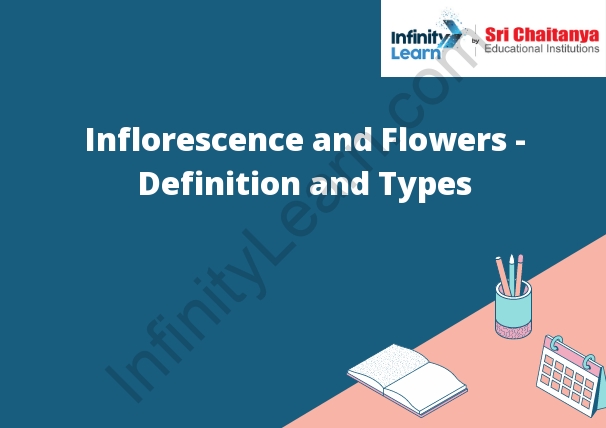Table of Contents
Definition of Inflorescence
Inflorescence is the arrangement of flowers on a stem. It can be a simple spike or a complex branched structure. The flowers may be all of the same species or of different species.

What is Inflorescence?
The main stem of a plant that bears flowers is called an inflorescence. The individual flowers that make up the inflorescence are called florets.
The Structure of Inflorescence
An inflorescence is an arrangement of flowers on a stem that is composed of a main axis and one or more lateral axes. The main axis is the stem that the flowers are attached to. The lateral axes are the smaller branches that grow off of the main axis. The flowers are usually arranged in a spiral pattern on the lateral axes.
Types of Inflorescence
There are two main types of inflorescence: racemose and cymose.
In a racemose inflorescence, the flowers are attached along a single central stem, with the flowers at the tip of the stem blooming first. The flowers along the stem progressively open in order from the base to the tip. This type of inflorescence is common in plants that grow in the wild, such as dandelions.
In a cymose inflorescence, the flowers are attached to a branching stem, with the flowers at the tips of the branches blooming first. The flowers along the branches open in order from the base to the tip. This type of inflorescence is common in plants that are grown in gardens, such as roses.
The Racemose Inflorescence
A racemose inflorescence is an inflorescence in which the flowers are attached to a central stem in a long, continuous series. The flowers may be arranged in any pattern along the stem, but they are typically arranged in a spiral pattern. The stem of a racemose inflorescence may be branched or unbranched.
The Cymose Inflorescence
A cymose inflorescence is a type of inflorescence in which the flowers are arranged along a single axis in a series of successively smaller cymes. The flowers are typically arranged in a spiral pattern. The cymose inflorescence is characteristic of the family Asteraceae.
The Compound Inflorescence
The compound inflorescence is a type of flower cluster in which the flowers are attached to a main stem in a series of smaller clusters or florets. The individual flowers in a compound inflorescence can be either radially or bilaterally symmetrical, and the clusters can be either aggregated or dispersed.
Cyathium
A cyathium (plural: cyathia) is a type of inflorescence in which many small flowers are clustered together on a single stem. The flowers may be radially symmetrical or have one or more petals that are not symmetrical.
A cyathium is a type of inflorescence in which many small flowers are clustered together on a single stem. The flowers may be radially symmetrical or have one or more petals that are not symmetrical.
Verticillaster
A verticillaster is a type of inflorescence in which the flowers are arranged in a whorl around a central axis.
Examples of plants that produce a verticillaster inflorescence include the coneflower “Echinacea purpurea” and the tickseed “Bidens cernua”.
Hypanthodium
A hypanthodium is a type of flower structure that is found in some plants. This type of flower has a long stem that supports many small flowers. The flowers are usually arranged in a spiral pattern around the stem.
Hypanthodiums are found in a variety of plants, including some orchids and lilies. These flowers can be quite beautiful, and they often have a strong fragrance.
The flowers of a hypanthodium are usually very small, and they don’t have a lot of petals. The petals are usually arranged in a spiral pattern around the stem. The flowers are usually a different color than the stem, and they may be a different color than the leaves.
The stem of a hypanthodium is usually long and thin. It may be covered in small bumps or ridges. The stem supports many small flowers, which are usually arranged in a spiral pattern.
The flowers of a hypanthodium are usually very small, and they don’t have a lot of petals. The petals are usually arranged in a spiral pattern around the stem. The flowers are usually a different color than the stem, and they may be a different color than the leaves.
The flowers of a hypanthodium are usually very small, and they don’t have a lot of petals. The petals are usually arranged in a spiral pattern around the stem. The flowers are usually a different color than the stem, and they may be a different color than the leaves.
What are the Different Types of Flowers?
There are many different types of flowers. Some of the most popular types of flowers include roses, lilies, tulips, and daisies.
Various Types of Flowers
There are many types of flowers. Some of the most popular flowers are roses, lilies, tulips, and orchids.
Hypogynous
The perianth is reduced to a single whorl of stamens.
Perigynous
The perigynous flowers are those in which the sepals, petals, and stamens are attached to the ovary directly or via a stalk (the style).
Epigynous
This term is used to describe a plant in which the reproductive organs are located on the upper surface of the stem, near the leaves.
Hypogynous Flower
A flower in which the ovary is located above the petals and sepals.
Perigynous Flower
A perigynous flower is a flower in which the sepals and petals are attached to the ovary directly or via a stalk-like structure called a gynophore.
Epigynous Flower
A flower in which the ovary is located above the petals and sepals.









